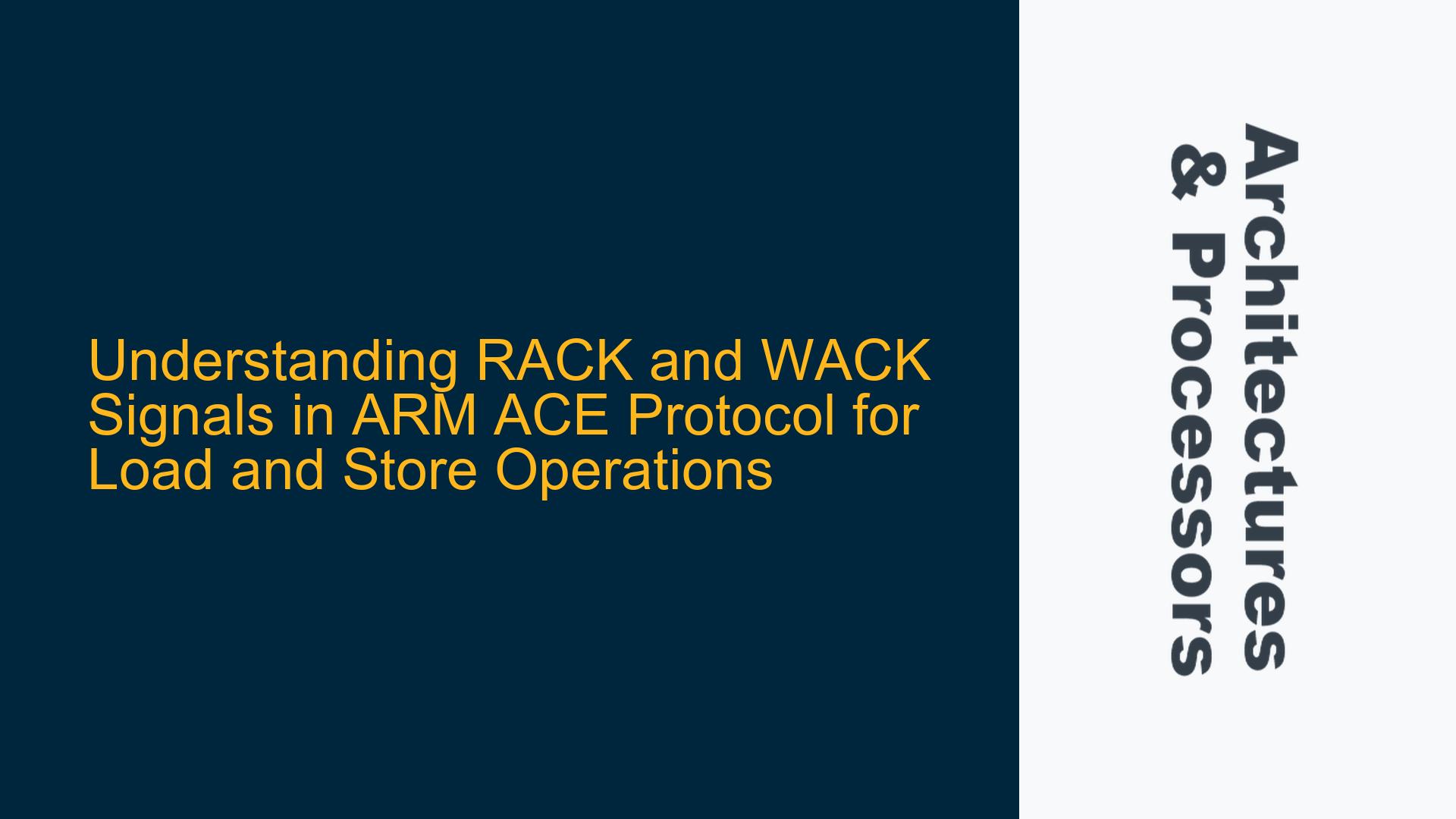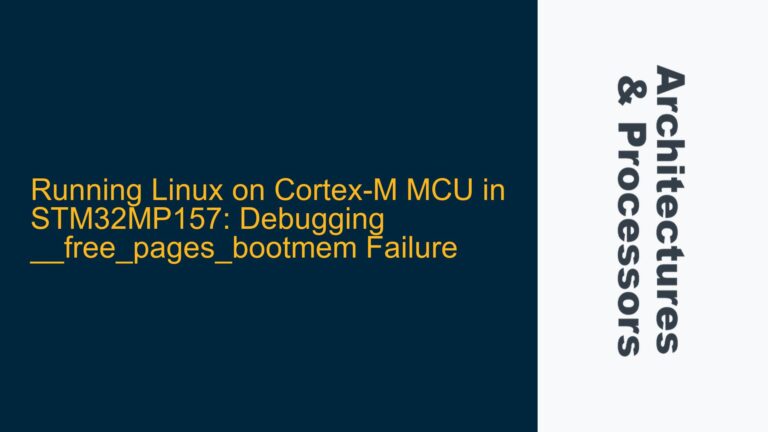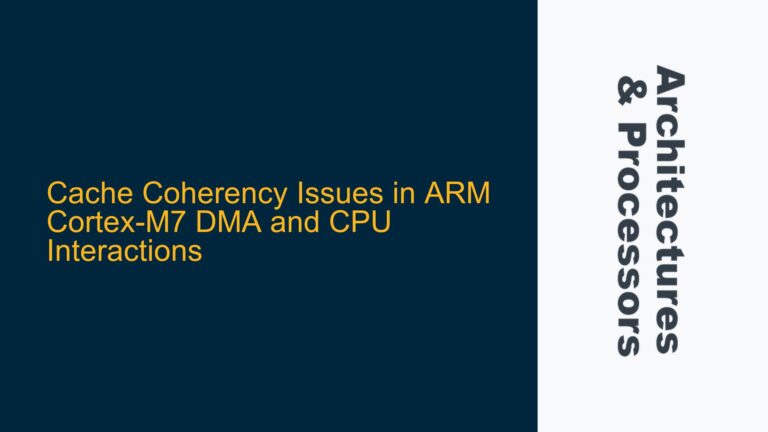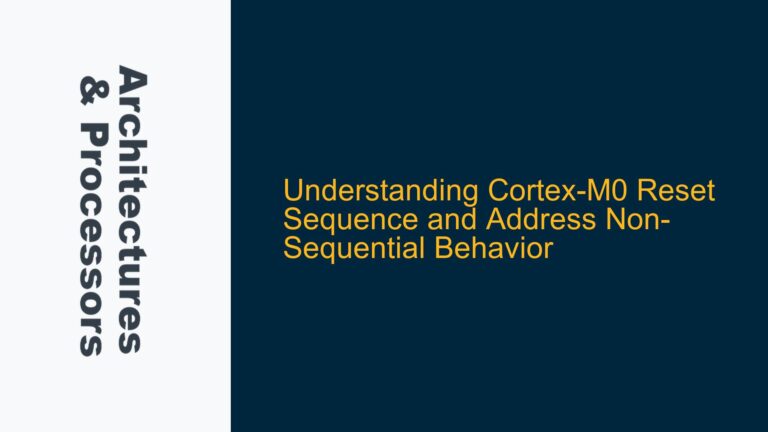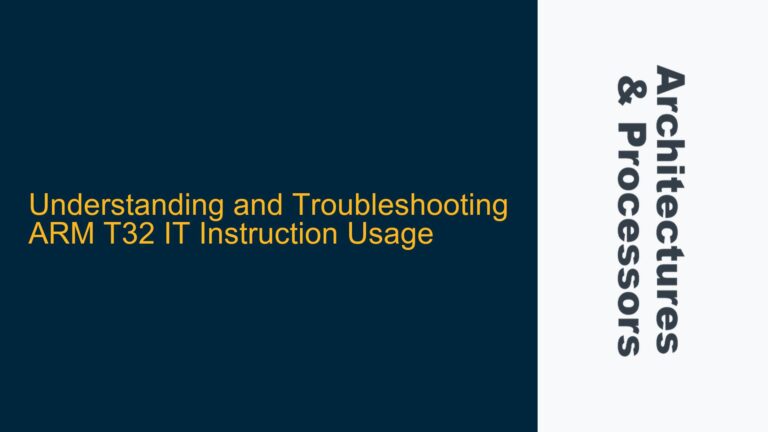ARM ACE Protocol: RACK Signal Usage in Load and Store Operations
The ARM ACE (AXI Coherency Extensions) protocol is a critical component in ensuring cache coherency and efficient data transfers in multi-core ARM systems. One of the key aspects of the ACE protocol is the use of acknowledgment signals, specifically RACK (Read Acknowledge) and WACK (Write Acknowledge), to confirm the completion of read and write transactions. However, a common point of confusion arises when observing that the RACK signal is used not only for load (read) operations but also for certain store (write) operations. This behavior is rooted in the underlying mechanisms of cache coherency and the way the ACE manager handles data transactions.
In the ACE protocol, the RACK signal is issued in response to transactions on the AR (Read Address) channel, while the WACK signal is issued in response to transactions on the AW (Write Address) channel. The AR channel is typically associated with read operations, where the ACE manager fetches data from memory or another cache. However, in the case of coherent store operations, the ACE manager often needs to obtain a unique copy of the cache line before performing the write. This process involves an operation on the AR channel, which is why a RACK signal is generated instead of a WACK signal.
The use of the RACK signal for store operations is not arbitrary but is a result of the ACE protocol’s design to maintain cache coherency. When a store operation is initiated, the ACE manager must first ensure that it has exclusive access to the cache line being modified. This is achieved by performing a read operation to obtain a unique copy of the cache line, which is then modified and written back to memory. Since this initial step involves the AR channel, the completion of this operation is acknowledged with a RACK signal. Only in specific cases, such as Write[Line]Uniques and memory update operations, where the transaction is directly issued on the AW channel, is a WACK signal used.
Memory Coherency and Cache Line Management in ACE Protocol
The ARM ACE protocol’s handling of cache coherency is a complex process that involves multiple steps to ensure that all cores in a multi-core system have a consistent view of memory. The protocol uses a combination of read and write transactions, along with acknowledgment signals, to manage cache lines and maintain coherency. The use of RACK and WACK signals is directly tied to the way the ACE manager handles these transactions.
When a core initiates a store operation, the ACE manager must first determine the state of the cache line in question. If the cache line is not already in the exclusive state, the ACE manager will issue a read operation on the AR channel to obtain a unique copy of the cache line. This read operation is necessary to ensure that no other core has a copy of the cache line that could lead to inconsistencies when the store operation is performed. Once the ACE manager has obtained the unique copy, it can proceed with the store operation, modifying the cache line and eventually writing it back to memory.
The use of the RACK signal in this context is a direct result of the initial read operation on the AR channel. The RACK signal indicates that the read operation has completed and that the ACE manager now has exclusive access to the cache line. This is a critical step in maintaining cache coherency, as it ensures that no other core can modify the cache line while the store operation is in progress.
In contrast, when a core initiates a write operation that does not require a prior read operation, such as a Write[Line]Unique or a memory update operation, the transaction is issued directly on the AW channel. In these cases, the completion of the write operation is acknowledged with a WACK signal. This distinction between RACK and WACK signals is essential for understanding how the ACE protocol manages cache coherency and ensures that all cores have a consistent view of memory.
Implementing Cache Coherency with RACK and WACK Signals in ARM ACE Protocol
To fully understand the use of RACK and WACK signals in the ARM ACE protocol, it is necessary to delve into the specifics of how cache coherency is implemented in multi-core ARM systems. The ACE protocol uses a combination of read and write transactions, along with acknowledgment signals, to manage cache lines and maintain coherency across all cores. The use of RACK and WACK signals is a key part of this process, as they provide a mechanism for the ACE manager to confirm the completion of transactions and ensure that all cores have a consistent view of memory.
When a core initiates a store operation, the ACE manager must first ensure that it has exclusive access to the cache line being modified. This is achieved by performing a read operation on the AR channel to obtain a unique copy of the cache line. The completion of this read operation is acknowledged with a RACK signal, indicating that the ACE manager now has exclusive access to the cache line and can proceed with the store operation. Once the store operation is complete, the modified cache line is written back to memory, and the ACE manager may issue additional transactions to update the cache coherency state of the cache line.
In cases where a store operation does not require a prior read operation, such as a Write[Line]Unique or a memory update operation, the transaction is issued directly on the AW channel. The completion of these transactions is acknowledged with a WACK signal, indicating that the write operation has been successfully completed. This distinction between RACK and WACK signals is crucial for understanding how the ACE protocol manages cache coherency and ensures that all cores have a consistent view of memory.
The implementation of cache coherency in the ARM ACE protocol is a complex process that involves multiple steps and careful management of cache lines. The use of RACK and WACK signals is a key part of this process, as they provide a mechanism for the ACE manager to confirm the completion of transactions and ensure that all cores have a consistent view of memory. By understanding the role of these signals in the ACE protocol, developers can better optimize their multi-core ARM systems for performance and reliability.
Detailed Analysis of RACK and WACK Signal Generation in ACE Protocol
The generation of RACK and WACK signals in the ARM ACE protocol is a critical aspect of ensuring cache coherency and efficient data transfers in multi-core ARM systems. These signals are generated in response to transactions on the AR and AW channels, respectively, and are used to confirm the completion of read and write operations. However, the specific conditions under which these signals are generated can vary depending on the type of transaction and the state of the cache line involved.
In the case of a store operation, the ACE manager must first ensure that it has exclusive access to the cache line being modified. This is typically achieved by performing a read operation on the AR channel to obtain a unique copy of the cache line. The completion of this read operation is acknowledged with a RACK signal, indicating that the ACE manager now has exclusive access to the cache line and can proceed with the store operation. Once the store operation is complete, the modified cache line is written back to memory, and the ACE manager may issue additional transactions to update the cache coherency state of the cache line.
In contrast, when a store operation does not require a prior read operation, such as a Write[Line]Unique or a memory update operation, the transaction is issued directly on the AW channel. The completion of these transactions is acknowledged with a WACK signal, indicating that the write operation has been successfully completed. This distinction between RACK and WACK signals is crucial for understanding how the ACE protocol manages cache coherency and ensures that all cores have a consistent view of memory.
The generation of RACK and WACK signals is also influenced by the specific requirements of the ACE protocol and the state of the cache line involved. For example, in the case of a coherent store operation, the ACE manager may need to perform additional transactions to ensure that the cache line is in the correct state before the store operation can proceed. These transactions may involve the use of the AR channel, which would result in the generation of a RACK signal. Similarly, in the case of a Write[Line]Unique or a memory update operation, the transaction is issued directly on the AW channel, resulting in the generation of a WACK signal.
Optimizing Cache Coherency with RACK and WACK Signals in ARM ACE Protocol
Optimizing cache coherency in multi-core ARM systems requires a deep understanding of the ARM ACE protocol and the role of RACK and WACK signals in managing cache lines. These signals are used to confirm the completion of read and write transactions and are essential for ensuring that all cores have a consistent view of memory. By understanding the specific conditions under which these signals are generated, developers can optimize their systems for performance and reliability.
One key aspect of optimizing cache coherency is minimizing the number of transactions required to perform a store operation. In the case of a coherent store operation, the ACE manager must first perform a read operation on the AR channel to obtain a unique copy of the cache line. This read operation is acknowledged with a RACK signal, indicating that the ACE manager now has exclusive access to the cache line and can proceed with the store operation. By minimizing the number of read operations required, developers can reduce the latency associated with store operations and improve overall system performance.
Another important aspect of optimizing cache coherency is ensuring that the ACE manager can quickly and efficiently handle transactions on both the AR and AW channels. This requires careful management of cache lines and the use of appropriate acknowledgment signals to confirm the completion of transactions. By understanding the specific conditions under which RACK and WACK signals are generated, developers can optimize their systems to handle transactions more efficiently and reduce the risk of cache coherency issues.
In addition to optimizing the generation of RACK and WACK signals, developers should also consider the impact of these signals on system performance. For example, the use of RACK signals for store operations can introduce additional latency, as the ACE manager must first perform a read operation on the AR channel before proceeding with the store operation. By understanding the trade-offs involved in using RACK and WACK signals, developers can make informed decisions about how to optimize their systems for performance and reliability.
Conclusion: Mastering RACK and WACK Signals in ARM ACE Protocol
The ARM ACE protocol’s use of RACK and WACK signals is a critical aspect of ensuring cache coherency and efficient data transfers in multi-core ARM systems. These signals are used to confirm the completion of read and write transactions and are essential for maintaining a consistent view of memory across all cores. By understanding the specific conditions under which these signals are generated, developers can optimize their systems for performance and reliability.
The use of RACK signals for store operations is a result of the ACE protocol’s design to maintain cache coherency. When a store operation is initiated, the ACE manager must first ensure that it has exclusive access to the cache line being modified. This is achieved by performing a read operation on the AR channel, which is acknowledged with a RACK signal. Only in specific cases, such as Write[Line]Uniques and memory update operations, where the transaction is directly issued on the AW channel, is a WACK signal used.
Optimizing cache coherency in multi-core ARM systems requires a deep understanding of the ARM ACE protocol and the role of RACK and WACK signals in managing cache lines. By minimizing the number of transactions required to perform a store operation and ensuring that the ACE manager can quickly and efficiently handle transactions on both the AR and AW channels, developers can improve system performance and reduce the risk of cache coherency issues.
In conclusion, mastering the use of RACK and WACK signals in the ARM ACE protocol is essential for developing high-performance, reliable multi-core ARM systems. By understanding the specific conditions under which these signals are generated and optimizing their use, developers can ensure that their systems are both efficient and consistent, providing a solid foundation for a wide range of applications.
